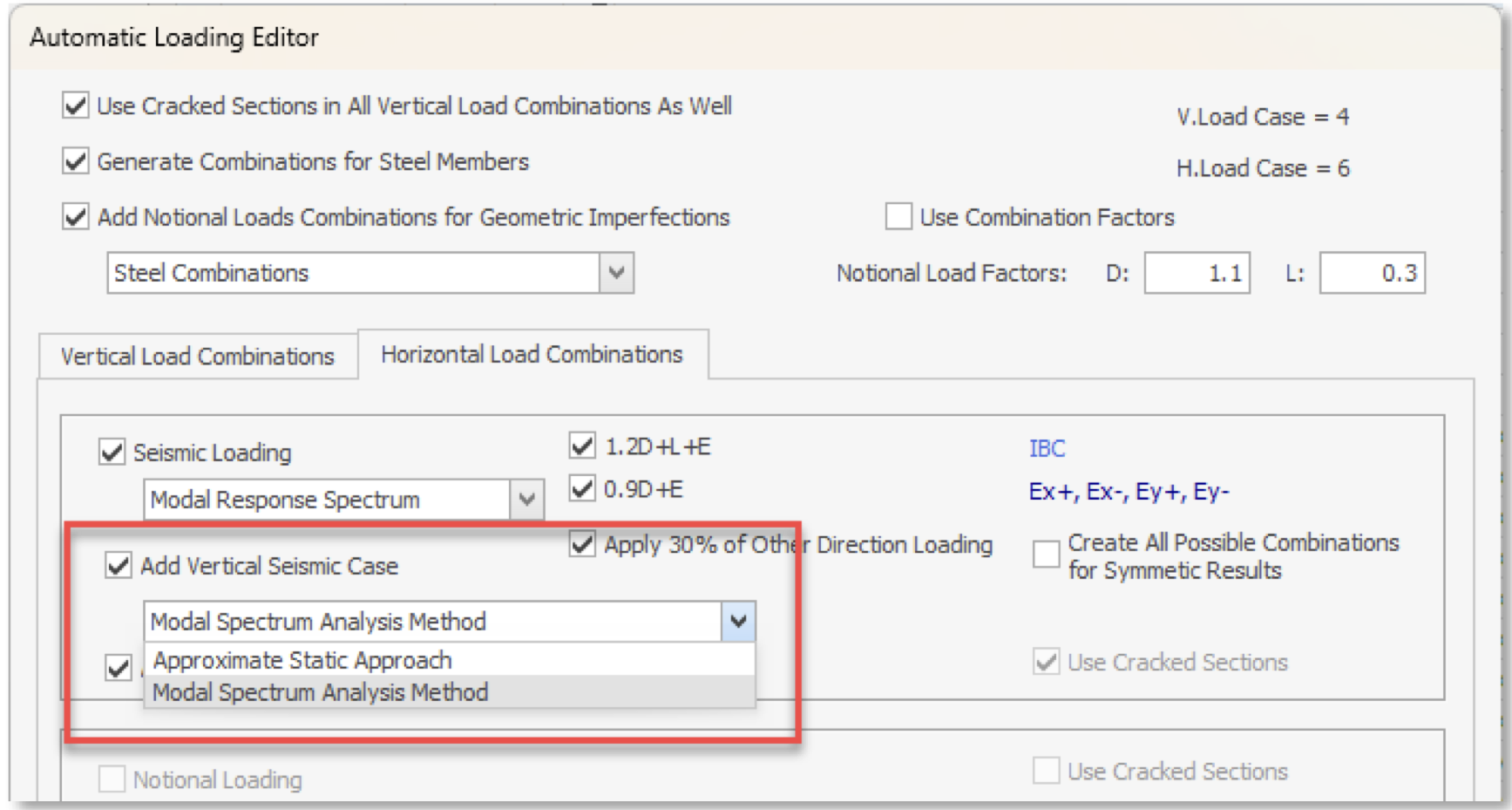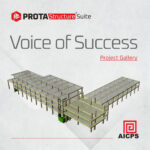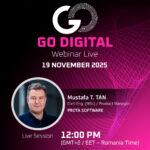
ProtaStructure Design Guide: Vertical Earthquake Effects Version 1.0
ProtaStructure effectively addresses vertical earthquake effects in design. It offers two distinct methods: the Approximate Static Approach and the Modal Spectrum Analysis Method. Transitioning between these methods ensures comprehensive coverage of seismic considerations.
Approximate Static Approach
In the Approximate Static Approach, designers multiply the gravity load case result by a fraction of the horizontal spectral acceleration, typically 0.2SDS. However, this method has limitations. Specifically, it does not account for vertical vibration modes or use a dedicated vertical spectrum. Consequently, it may not meet code requirements for buildings with transfer columns, beams spanning large distances, long cantilevers, or slanting columns. To address these issues, certain seismic codes, such as Eurocode, require modal vertical earthquake analysis.
Modal Spectrum Analysis Method
Conversely, the Modal Spectrum Analysis Method considers the vertical vibration modes of the structure alongside a vertical acceleration spectrum. To activate this method:
- Open the Automatic Loading Editor.
- Select the Modal Spectrum Analysis Method.
- Click OK. This will automatically generate the load combinations, including the vertical earthquake load cases.
Combining Vertical Earthquake Cases with Other ActionsApproximate Static Approach
In this approach, Static Vertical Earthquake load cases should be combined with a positive sign in G+Q+E combinations and with a negative sign in 0.9G + E combinations.
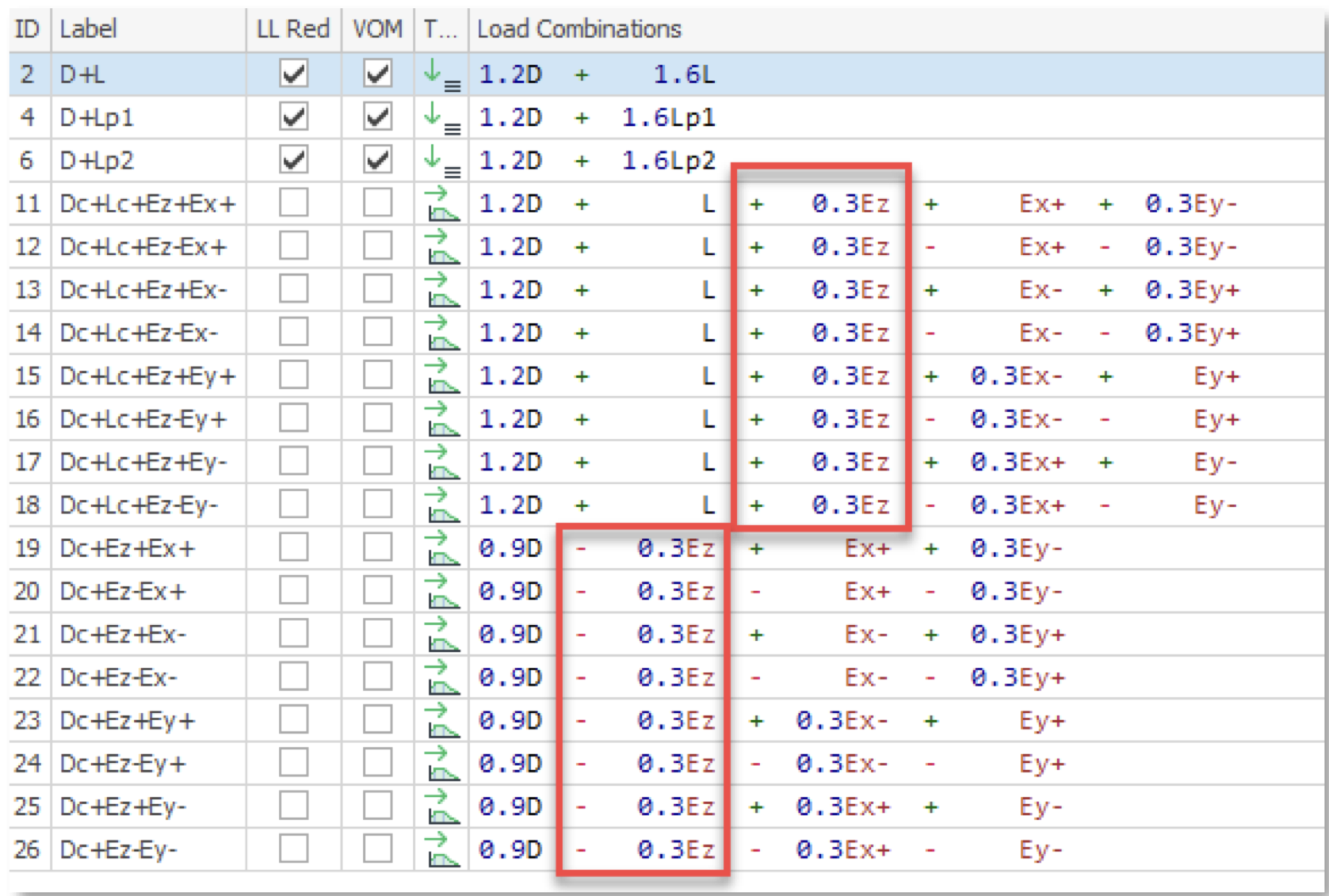
Modal Spectrum Analysis Method
When performing a Modal Vertical Earthquake Analysis, the CQC modal combination results in the loss of signs. Depending on the Results Sign Method option set by the user, the resulting values will either be positive or will take the sign of the dominant vertical mode. To capture the critical effects, combine modal vertical earthquake load cases with dead and live load cases using both positive and negative signs. This effectively doubles the number of seismic combinations, ensuring comprehensive analysis.
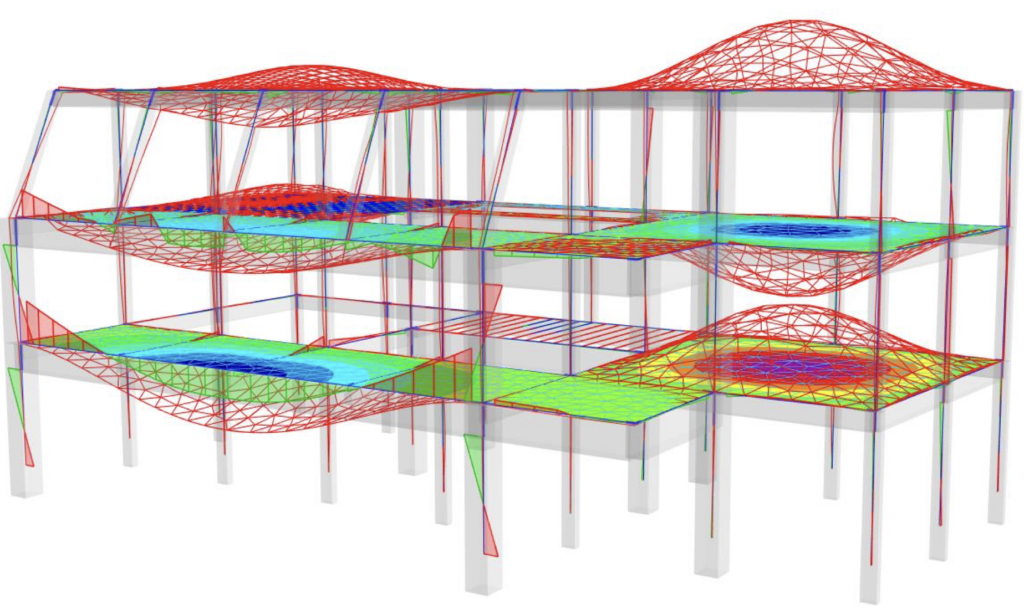
Number of Vertical Modes
ProtaStructure performs an eigenvalue analysis in the vertical direction, taking into account the vertical mass matrix and structure stiffness. This process identifies local vibration modes caused by long-span beams or slabs, large cantilevers, slanting columns, and transfer beams and slabs supporting vertical members. Next, these modes are used in the mode-superposition analysis conducted in the vertical direction. You can specify the number of vertical modes in Seismic Parameters > Analysis > Number of Vertical Modes. After completing the analysis, it is important to review the calculated modal values in the Eigenvalue Analysis Report.
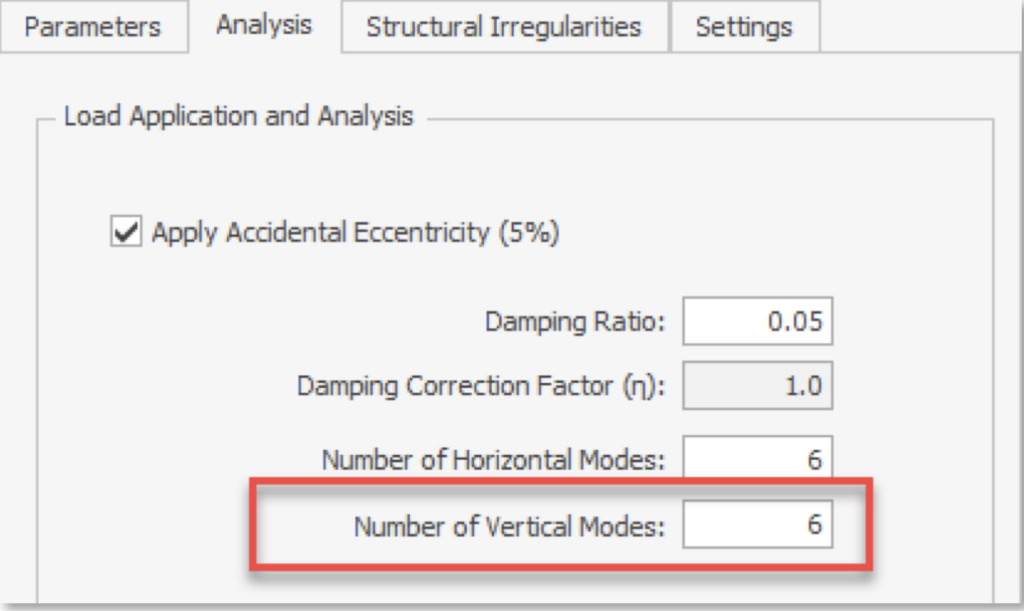
Definition of Vertical Acceleration Spectrum
To perform a modal vertical earthquake analysis, it is crucial to define a vertical spectrum. ProtaStructure introduces the vertical acceleration spectrum, accessible from the Seismic Parameters window. Some seismic codes explicitly specify the shape of the vertical spectrum, such as ASCE07, Eurocode 8, TBDY2018, NTE030, DPT1302, and SNI1726.
Vertical spectrum is also tabulated and graphically presented in Pre-Analysis Checks Report
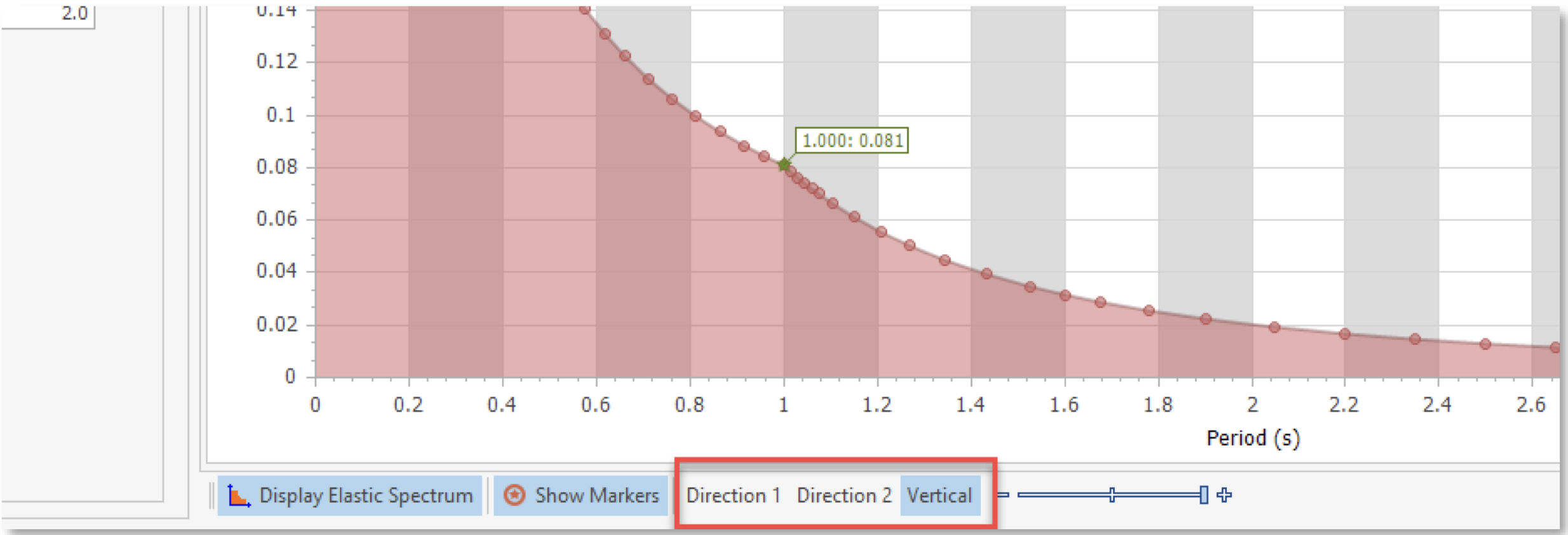
ProtaStructure automatically calculates the vertical spectrum for these codes. For codes that do not specify an explicit vertical spectrum, ProtaStructure offers two options:
- Fraction of Horizontal Spectrum: This method multiplies the horizontal design spectrum by a user-defined factor, defaulting to 2/3.
- Constant Acceleration: This method applies the same response for all vertical modes as the static approach.
These options can be accessed from the Seismic Parameters > Analysis window.

It should be noted that some codes, such as ASCE07-16, SNI1726-2019, TBDY2018, EN1998-1:2004, and NTE030, specify a vertical acceleration spectrum directly, making these two options unavailable for these codes.
Mass Calculation and Mass Matrix
Accurate structural behavior in modal vertical earthquake analysis requires precise calculation of vertical mass distribution (in the Z direction). It is crucial to distinguish active masses in the Z direction (mZ) from active lateral masses in the translational X (mX) and Y (mY) directions and the mass moment of inertia around the Z axis. ProtaStructure calculates vertical mass distribution automatically, but for accurate behavior, consider the following:
- Beams Not Supporting Any Slabs: Calculate masses only at the start and end nodes. For long span beams, divide them into multiple adjacent pieces to capture more accurate effects.
- Beams Supporting Ordinary Slabs: Mesh the slabs and beams to capture vertical earthquake effects more accurately.
- Beams Supporting Ribbed and Waffle Slabs: These are automatically considered part of the analytical model, with vertical masses assigned at intersections.
- Beams Supporting Composite Slabs: Assign vertical masses to the start and end points of secondary composite beams.
- Transfer Beams or Slabs Supporting Stub Columns: Mesh beams and slabs compatibly with column ends for correct stiffness and load transfers.
- Vertical or Slanting Columns: Lump masses at the ends of all columns.
- Members Intersecting Each Other: Calculate and assign masses to intersecting nodes automatically.
- Steel Purlins, Girts, Planar Trusses, Space Trusses, Domes, Braces: Automatically calculate mass values at intersection points.
ProtaStructure calculates masses from dead loads, live loads, and user-defined vertical loads. Mass distribution changes based on analytical options, with specific considerations for diaphragm constraints.
Thank You
Thank you for choosing the ProtaStructure Suite product family. We are committed to providing you with an excellent experience through our software technology solutions. For technical support requests or questions, please contact us anytime via globalsupport@protasoftware.com and asiasupport@protasoftware.com. Our dedicated online support center and responsive technical support team are here to help you make the most of Prota’s technology solutions.
White Papers
We use white papers to detail complex engineering topics, design methodologies, and technical solutions, such as vertical earthquake effects, castellated beams, space trusses, rebar anchorage, and more. These documents aim to educate and inform professionals about specific features, calculations, and best practices in structural engineering and design.
Check out White Papers Now!
White Paper
FAQs- What is the ProtaStructure Design Guide?
The ProtaStructure Design Guide provides comprehensive instructions on vertical earthquake effects, including methods for static and modal spectrum analysis. - How does the Approximate Static Approach work?
The static approach multiplies gravity load results by a fraction of horizontal spectral acceleration, without considering vertical vibration modes. - What is the Modal Spectrum Analysis Method?
This method considers vertical vibration modes together with a vertical acceleration spectrum to provide more accurate earthquake effect analysis. - How does ProtaStructure calculate vertical masses?
ProtaStructure automatically calculates vertical mass distribution from dead loads, live loads, and user-defined vertical loads, considering diaphragm constraints. - Where can I get support for ProtaStructure?
For training and technical support, contact Prota Software Inc. via Prota Help Center.
The ProtaStructure Design Guide provides comprehensive instructions on vertical earthquake effects, including methods for static and modal spectrum analysis.
The static approach multiplies gravity load results by a fraction of horizontal spectral acceleration, without considering vertical vibration modes.
This method considers vertical vibration modes together with a vertical acceleration spectrum to provide more accurate earthquake effect analysis.
ProtaStructure automatically calculates vertical mass distribution from dead loads, live loads, and user-defined vertical loads, considering diaphragm constraints.
For training and technical support, contact Prota Software Inc. via Prota Help Center.



